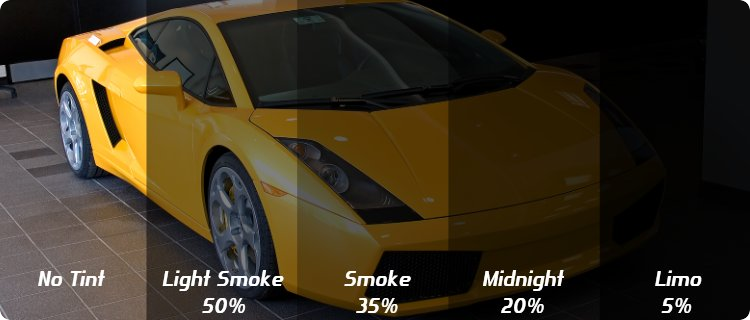Windows tinting films are usually made of polyester materials at between 0.002 to 0.007 inches. In this case multiple layers of tinting films are bonded together to provide protection against scratch and UV light. Here are types of tinting film that we should know:
- Dyed films: It is consisted of a basic dyed film layer that reduces external visibility and absorbs heat. Impacts on visibility from the interior of the car should be reduced. Dyed films shouldn’t be used on the interior, because heat between the panes would be trapped, especially when there’s no air movement.
- Deposited films: These films are made using a more intricate technology. The tint is produced by metal deposits on the film. This technology is still fairly affordable and commonly available. However, there are limited types of metals that can be used for this manufacturing process. It means that the production line can be fairly restrictive.
- Sputtered or metalized films: This process is more complicated than the deposited films technique. Just like with the deposited film, the sputtering process is also performed in vacuum chamber, but the application of metal is achieved at the finer atomic level. During the production process, electromagnetic fields are used, causing individual atoms to break away from block of metal and deposited uniformly onto the film. There are about 20 types of metals that can be used for this process. Metallized tinted films are typically more expensive than the above films.
- Hybrid films: Hybrid films use both metallized and dyed film layers. It means that these films combine the absorption characteristics of standard dyed films and the reflective properties of metallized films. However, the amount of tint can be lower than the standard dyed films and less material is needed during the production process. Hybrid films shatter the misconception that greater heat rejection can be achieved using darker films. In many cases, car owners choose darker dyed films primarily only for greater privacy and aesthetics reasons.
- Ceramic films: Ceramic films are the newest tinting film technology and it is generally a top-tier application. Ceramic films employ nanotechnology process and its ability to reject heat may surpass even the best metallic films. Ceramic films are also known for their durability, preventing the shattering of the glass during an accident. Ceramic films are also resistant to bubbling, discoloration, cracking and fading. The main drawback of using ceramic film is its high price. For car owners who seek the best possible windows tinting solution, ceramic films are clearly the most appropriate.

